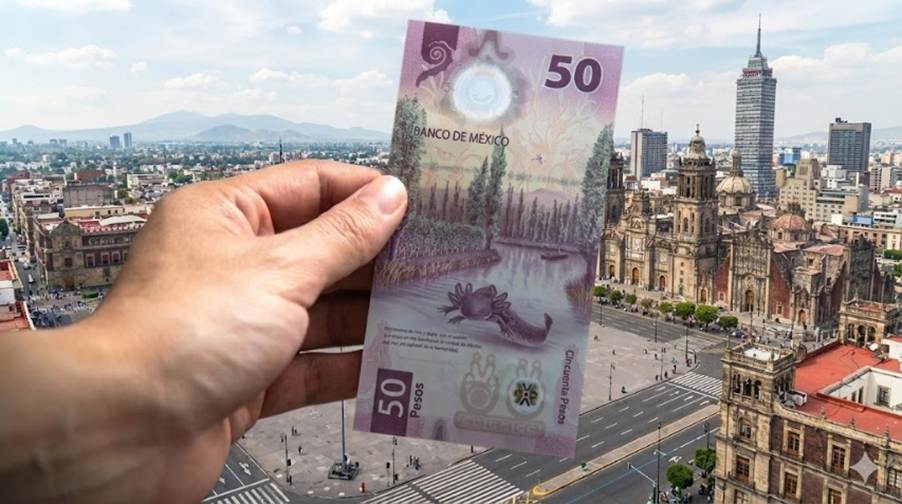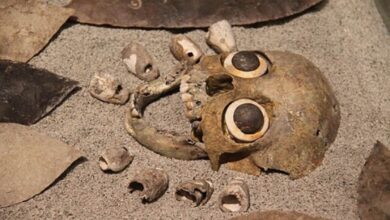Mexican Axolotl Banknote Turns Tiny Salamander Into National Treasure Today

A 50-peso note featuring a smiling axolotl named Gorda has become a beloved collectible in Mexico, blurring the line between cash and cultural icon as millions of Mexicans stash the bill and learn about a species that is today nearing extinction.
From Museum Tank To National Celebrity
For most of her life, Gorda was just another axolotl drifting through the filtered waters of a museum tank in Mexico City. Visitors at Axolotitlán, a small museum dedicated to the strange amphibians, might have paused to marvel at her feathery gills and otherworldly stare, then moved on.
That all changed when the Bank of Mexico chose her as the model for a new 50-peso banknote, El País reports.
Released in 2021, the bill features a bright, stylized portrait of Gorda representing Mexico’s iconic “water monster,” the axolotl. The note immediately drew attention from currency designers and collectors around the world. The International Bank Note Society went so far as to name it Note of the Year, praising both its design and its rich evocation of Mexican history and biodiversity.
On the reverse, the bill depicts the Aztec capital, Tenochtitlan, based on a Diego Rivera mural. The scene shows the island city rising out of Lake Texcoco under the shadow of the volcano Popocatépetl—a reminder that the axolotl once swam freely in those same waters, centuries before the Spanish conquest.
Together, Gorda and the ancient city give the tiny note an unexpectedly epic feel: a small piece of paper linking modern Mexico to its pre-Hispanic past.
A Banknote People Refuse To Spend
Four years on, the axolotl note has stopped being just a means of payment and has become more like a popular shrine. A new report from the Bank of Mexico, cited by El País, reveals that 12.9 million Mexicans are deliberately holding onto the 50-peso bill rather than spending it.
Many of them are not content with just one: they hoard several, tucking them into drawers, photo albums, or between the pages of books. Only a minority told surveyors they would never spend the note under any circumstances, but even temporary hoarding adds up. The central bank estimates that roughly $150 million worth of these notes were out of circulation at the time of the survey.
In a country where a 50-peso bill is worth less than $3, that is a remarkable amount of cash to be treated more like a collectible than a tool for buying groceries or paying bus fare.
Speculation has sprung up alongside sentiment. Some of the earliest notes off the presses are already being traded for up to 100 times their face value. For hardcore banknote collectors, the combination of an award-winning design, cultural symbolism, and a limited early print run makes the Gorda bill a treasure.
Yet the Bank of Mexico’s survey suggests most people hoarding the axolotl note are motivated by something simpler and more emotional. Only 12 percent of those holding onto the axolotl bill said they do the same with other denominations. The attachment is specific, and when asked why, most people gave the same answer: they like the design.
In other words, the image of Gorda has transformed a forgettable, low-value note into something people want to keep close. It is a reminder that money carries not just numbers and security features, but stories—and that when people love the story, they would rather save the note than spend it.

Ancient Creature, Modern Crisis
Part of the note’s magic lies in what the axolotl represents. These amphibians are evolutionary oddities: salamanders that never grow to immense sizes. Unlike their cousins, they don’t lose their gills or fully adapt to life on land. Instead, they remain in a permanent larval stage, floating through the water with frilled headdresses and faint, enigmatic smiles.
They predate the Aztecs, let alone the Spanish, and were once abundant in Lake Texcoco beneath the smoking cone of Popocatépetl. When the Mexica people arrived around 1300 AD, they built Tenochtitlan on an island in the lake, constructing a vast city of canals and causeways. Axolotls lived all around them—food source, mythic symbol, and everyday presence.
The Aztecs sometimes ate them, but they also named the creature for their god of fire and lightning. To look at Gorda’s portrait on the banknote, then flip the bill and see Rivera’s Tenochtitlan, is to glimpse a whole vanished world in miniature.
That world was dismantled after the Spanish conquest. Colonial rulers gradually drained Lake Texcoco and transformed the landscape into what is now metropolitan Mexico City. Only in Xochimilco, on the capital’s southern edge, did fragments of the old waterways survive. There, in a patchwork of canals and chinampas, the last wild axolotls held on.
But even that refuge has been eroding. Pollution, invasive species, and urban sprawl have pushed axolotls to the brink. By 2014, surveys in Xochimilco found their numbers had collapsed to just 36 individuals per square kilometer. Today, most axolotls live not in the wild but in aquariums, labs, and small sanctuaries like Axolotitlán.
The Gorda note, for all its bright colors and playful charm, quietly carries this darker story of ecological crisis.
Design, Identity, And A Fight For Survival
Gorda herself now lives a mostly quiet life. She is one of six axolotls at Axolotitlán, and, as El País recounts, she is elderly enough that staff rarely put her on display. The photo shoot that turned her into a national icon was a rare outing, organized so that the Bank of Mexico’s designers could capture her distinctive look.
The museum’s founder, Pamela Valencia, told El País that the temporary stress was worth it if it helped bring the public closer to an animal teetering on the edge of extinction. “We used to see souvenirs of jaguars and hummingbirds. Today we can see how the axolotl is becoming part of our culture, our everyday lives,” Valencia said.
Her point is simple but powerful: people are unlikely to fight for something they barely know exists. By putting Gorda on the country’s most beloved banknote, the state has turned every Mexican wallet into a tiny awareness campaign.
The axolotl bill also reflects a broader shift in how Mexico presents itself to the world and to its own citizens. For years, iconic images in mass culture leaned heavily on eagles, pyramids, charros, and other familiar motifs. The choice of a small, endangered amphibian as the star of a banknote signals a different kind of pride—one rooted in biodiversity, scientific curiosity, and pre-Hispanic heritage.
It is no coincidence that so many people want to keep the note rather than hand it over at the supermarket till. In holding onto the bill, they are holding onto a piece of identity, a reminder of the lakes buried beneath the city and of a creature that somehow embodies both resilience and fragility. The fact that some early notes now fetch spectacular prices in collectors’ markets only reinforces the sense that this is more than money—it is a fragment of a story that people want to be part of.
Yet the irony remains: every axolotl note tucked safely away is one less reminder passing from hand to hand on buses, in markets, and across shop counters. The challenge now, as Valencia suggests, is to turn fascination into action. If Gorda has become a star, the question is whether her fame can help protect her wild cousins in Xochimilco.
For El País, the story of Gorda and the 50-peso bill is not just a quirky human-interest piece about a cute animal on a pretty banknote. It is a snapshot of how design, memory, and emotion can combine to make environmental crisis visible—and how a little Mexican salamander ended up carrying far more weight than its face value suggests.
Also Read: Latin America Faces Trump’s Tariff Shock With Risks—and Unexpected Openings




